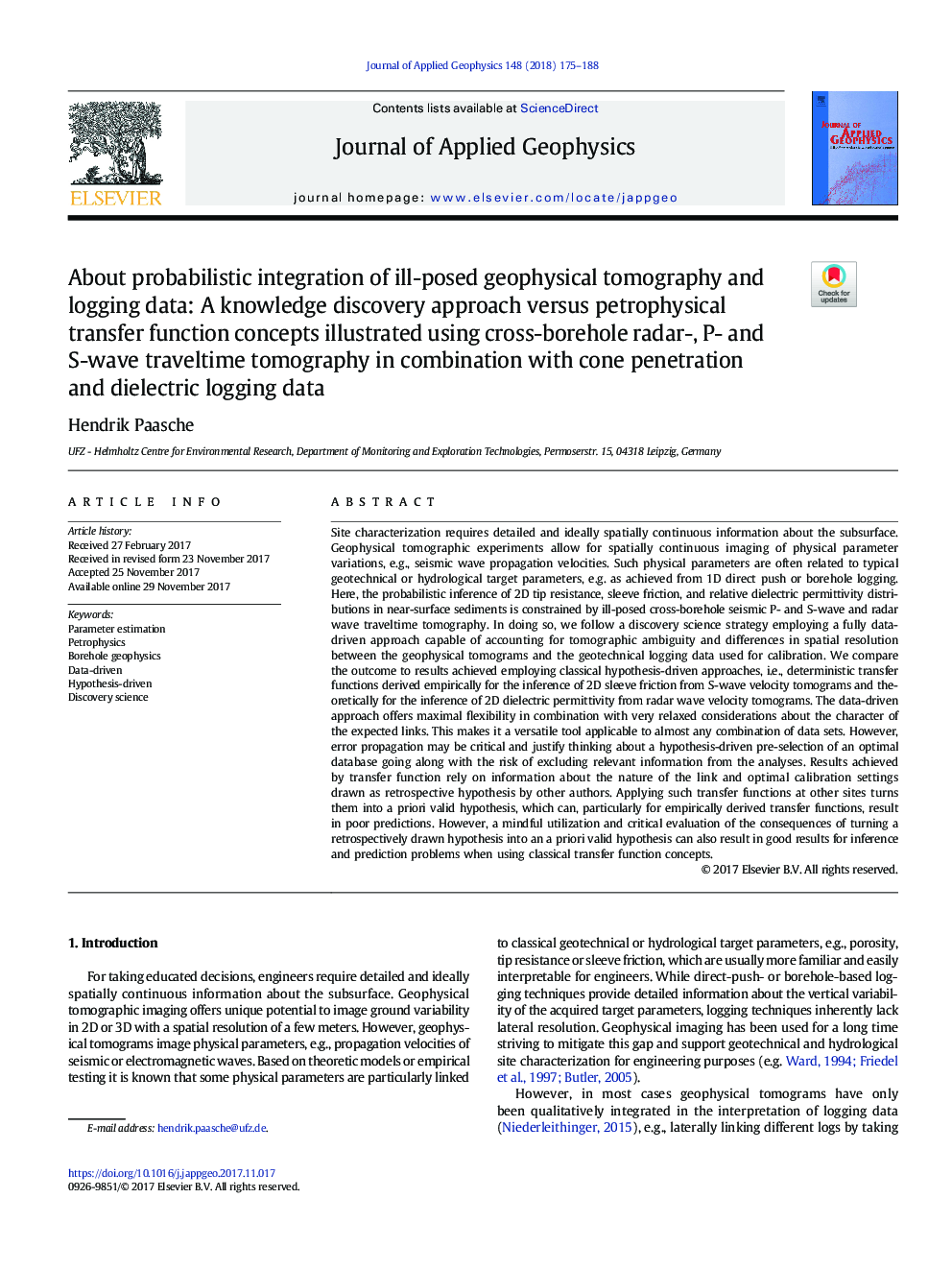| کد مقاله | کد نشریه | سال انتشار | مقاله انگلیسی | نسخه تمام متن |
|---|---|---|---|---|
| 8915553 | 1641103 | 2018 | 14 صفحه PDF | دانلود رایگان |
عنوان انگلیسی مقاله ISI
About probabilistic integration of ill-posed geophysical tomography and logging data: A knowledge discovery approach versus petrophysical transfer function concepts illustrated using cross-borehole radar-, P- and S-wave traveltime tomography in combinatio
دانلود مقاله + سفارش ترجمه
دانلود مقاله ISI انگلیسی
رایگان برای ایرانیان
کلمات کلیدی
موضوعات مرتبط
مهندسی و علوم پایه
علوم زمین و سیارات
فیزیک زمین (ژئو فیزیک)
پیش نمایش صفحه اول مقاله

چکیده انگلیسی
Site characterization requires detailed and ideally spatially continuous information about the subsurface. Geophysical tomographic experiments allow for spatially continuous imaging of physical parameter variations, e.g., seismic wave propagation velocities. Such physical parameters are often related to typical geotechnical or hydrological target parameters, e.g. as achieved from 1D direct push or borehole logging. Here, the probabilistic inference of 2D tip resistance, sleeve friction, and relative dielectric permittivity distributions in near-surface sediments is constrained by ill-posed cross-borehole seismic P- and S-wave and radar wave traveltime tomography. In doing so, we follow a discovery science strategy employing a fully data-driven approach capable of accounting for tomographic ambiguity and differences in spatial resolution between the geophysical tomograms and the geotechnical logging data used for calibration. We compare the outcome to results achieved employing classical hypothesis-driven approaches, i.e., deterministic transfer functions derived empirically for the inference of 2D sleeve friction from S-wave velocity tomograms and theoretically for the inference of 2D dielectric permittivity from radar wave velocity tomograms. The data-driven approach offers maximal flexibility in combination with very relaxed considerations about the character of the expected links. This makes it a versatile tool applicable to almost any combination of data sets. However, error propagation may be critical and justify thinking about a hypothesis-driven pre-selection of an optimal database going along with the risk of excluding relevant information from the analyses. Results achieved by transfer function rely on information about the nature of the link and optimal calibration settings drawn as retrospective hypothesis by other authors. Applying such transfer functions at other sites turns them into a priori valid hypothesis, which can, particularly for empirically derived transfer functions, result in poor predictions. However, a mindful utilization and critical evaluation of the consequences of turning a retrospectively drawn hypothesis into an a priori valid hypothesis can also result in good results for inference and prediction problems when using classical transfer function concepts.
ناشر
Database: Elsevier - ScienceDirect (ساینس دایرکت)
Journal: Journal of Applied Geophysics - Volume 148, January 2018, Pages 175-188
Journal: Journal of Applied Geophysics - Volume 148, January 2018, Pages 175-188
نویسندگان
Hendrik Paasche,